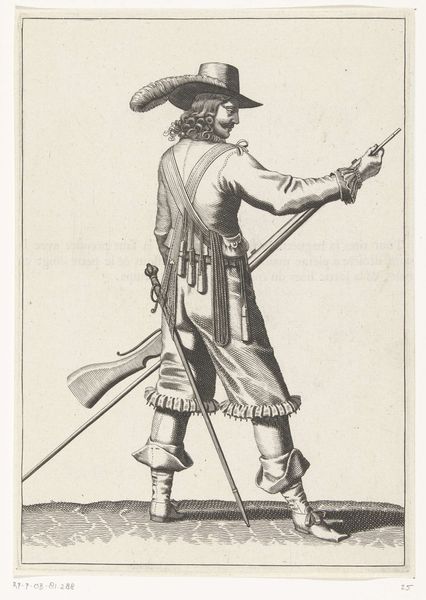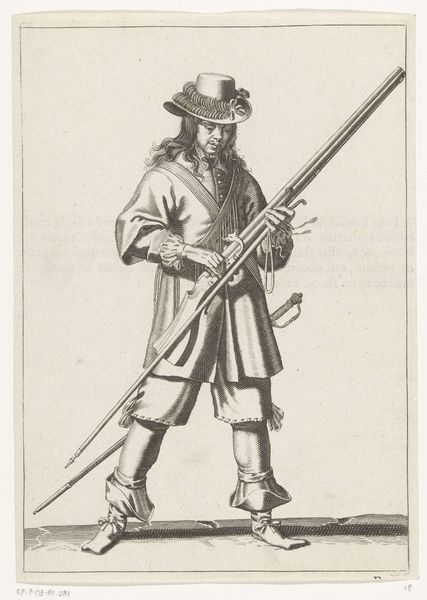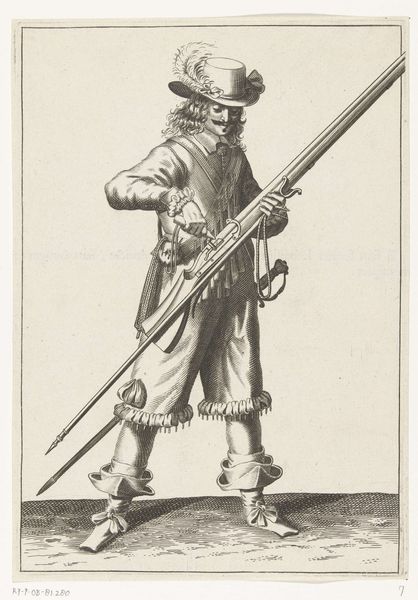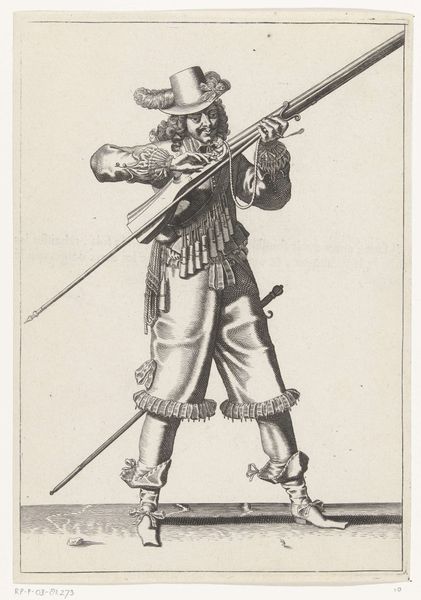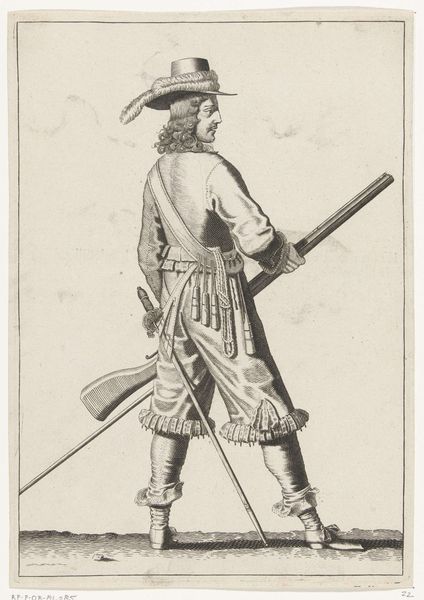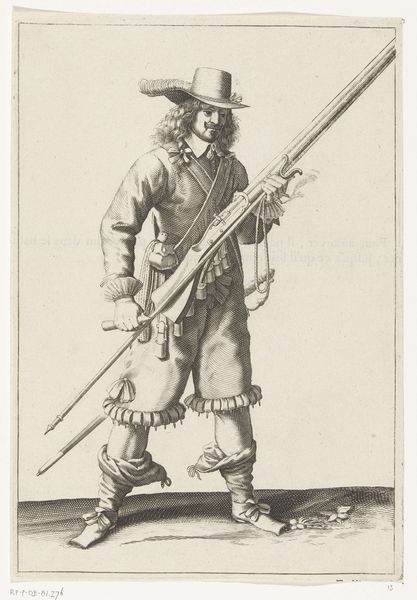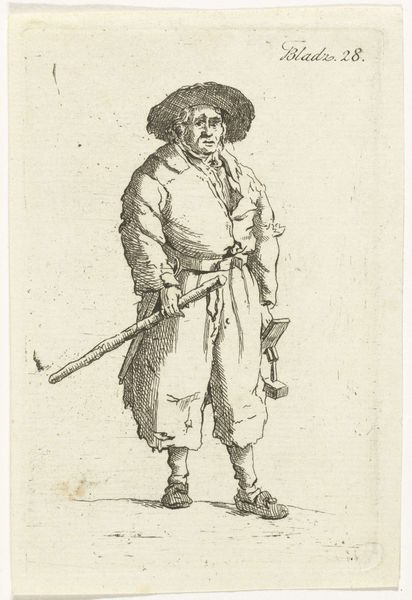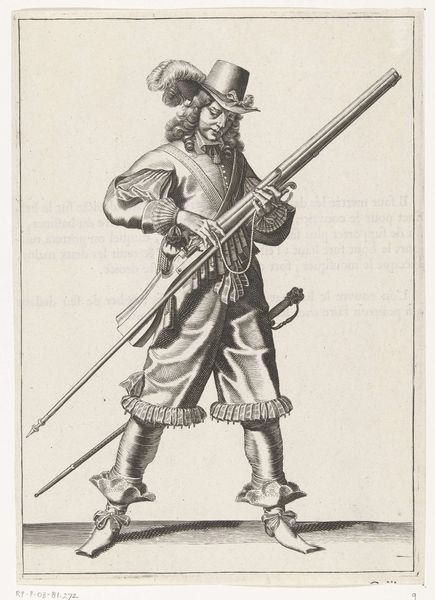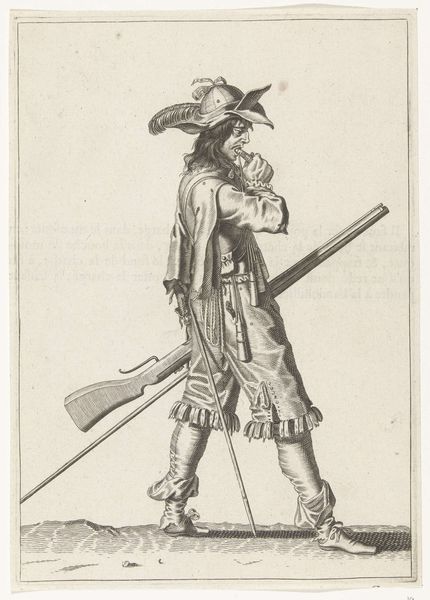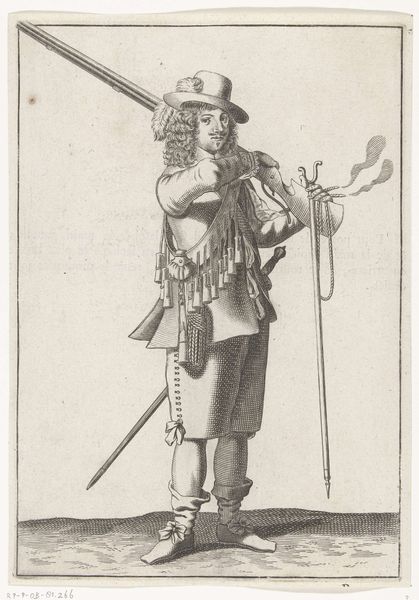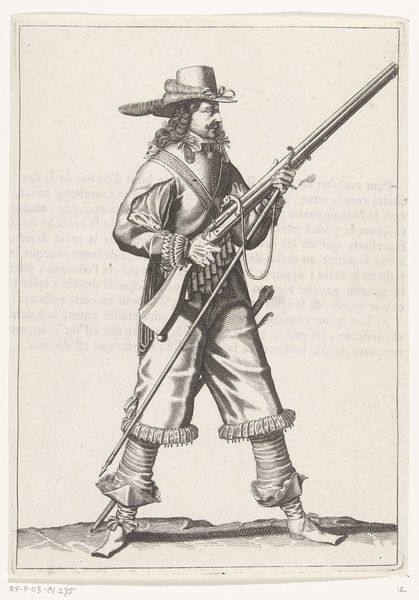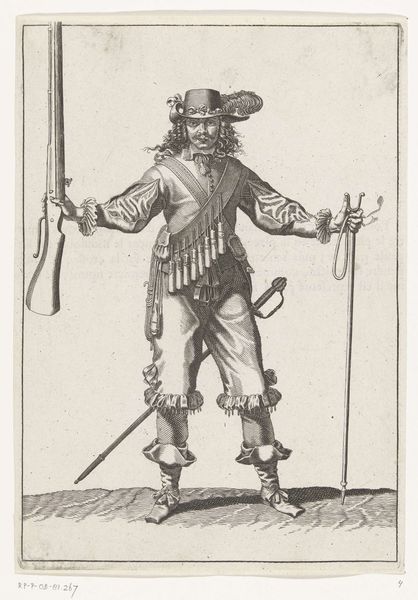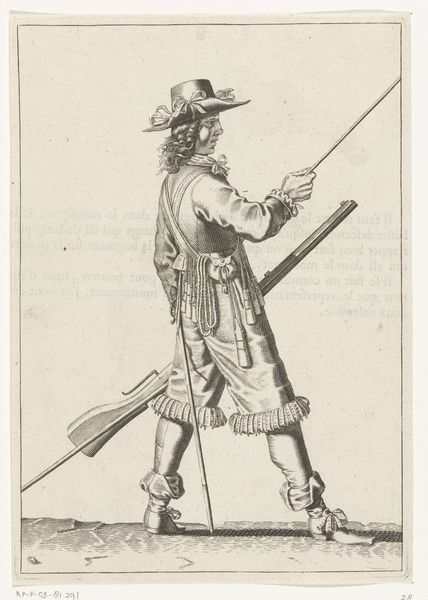
print, engraving
#
portrait
#
weapon
#
baroque
# print
#
figuration
#
genre-painting
#
engraving
Dimensions: height 235 mm, width 165 mm
Copyright: Rijks Museum: Open Domain
Editor: Here we have a print from around 1645 to 1647, "Soldier Shaking Powder from His Musket," by Petrus Rucholle. The soldier, fashionable hat and all, is completely centered. I'm struck by the mundane task depicted—not a heroic battle, but simply cleaning a weapon. What's your take? Curator: It's precisely that banality that interests me. Consider the Eighty Years’ War raging in the Netherlands at this time, and the shifting roles of soldiers within the society. Images like this served not only as portraits but as documents reflecting a new kind of civic militarism. How do you think prints like these influenced public perceptions of soldiers? Editor: That's a great point. The wide availability of prints would definitely have shaped how ordinary people viewed these soldiers. So, this isn't just a portrait; it's potentially propaganda? Curator: Not necessarily propaganda in the modern sense, but certainly image management. These prints humanized soldiers. This work invites the viewer to identify with a person performing routine chores. Look how meticulously Rucholle detailed his clothing and arms. This elevated the common soldier. How would a depiction of, say, a brutal sacking of a town contrast with this? Editor: Wow, you are right. Seeing the detail in this artwork brings that era to life in a surprising way, revealing both its everyday nature and the messages being communicated. Something that stood out at first glance as simple is more nuanced and purposeful than I had realized. Thanks for sharing this new perspective. Curator: It's a testament to the power of art that an image of a routine act could carry such heavy weight during moments of socio-political change. It reveals how intertwined visual culture and politics always are.
Comments
No comments
Be the first to comment and join the conversation on the ultimate creative platform.
